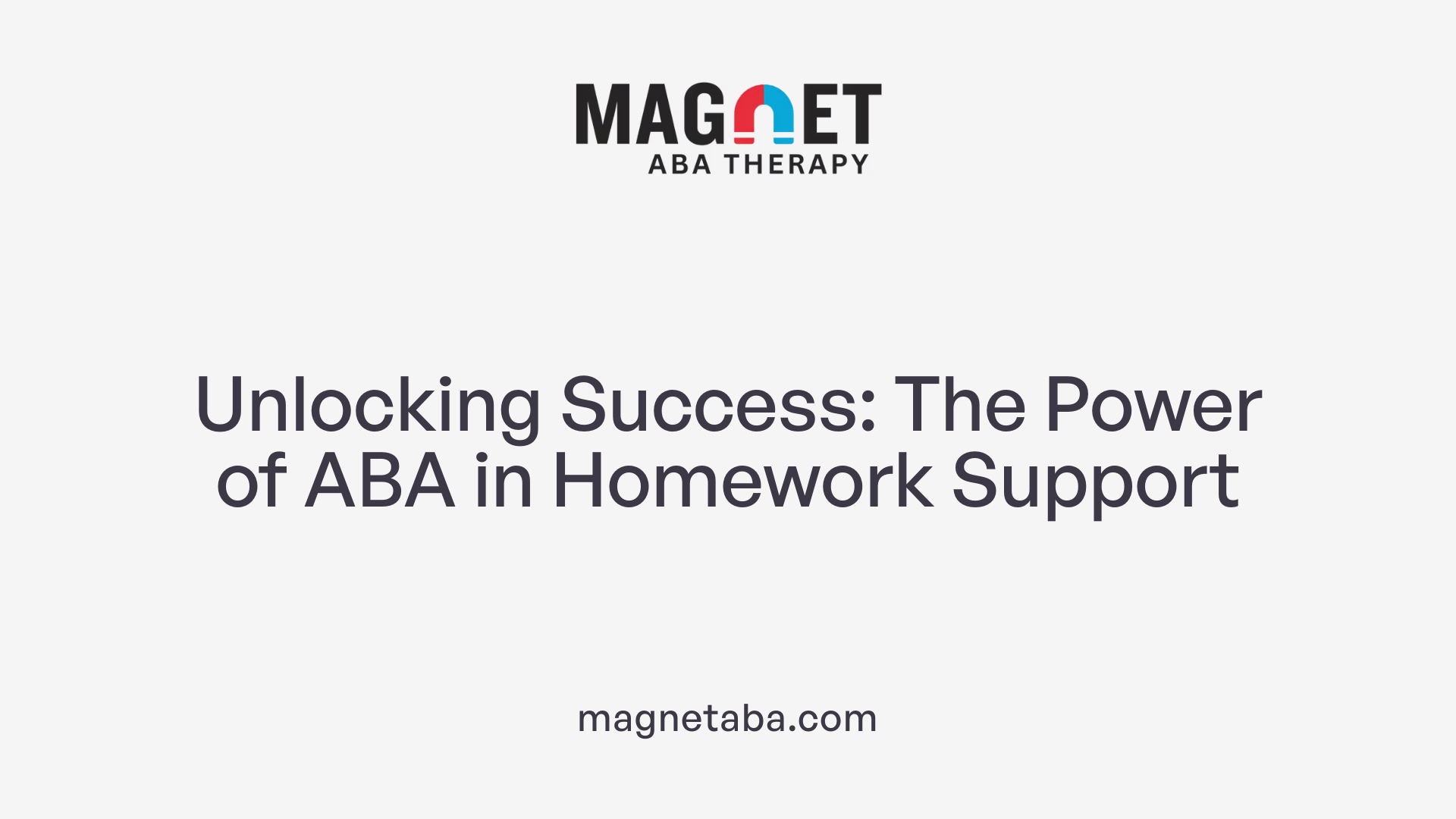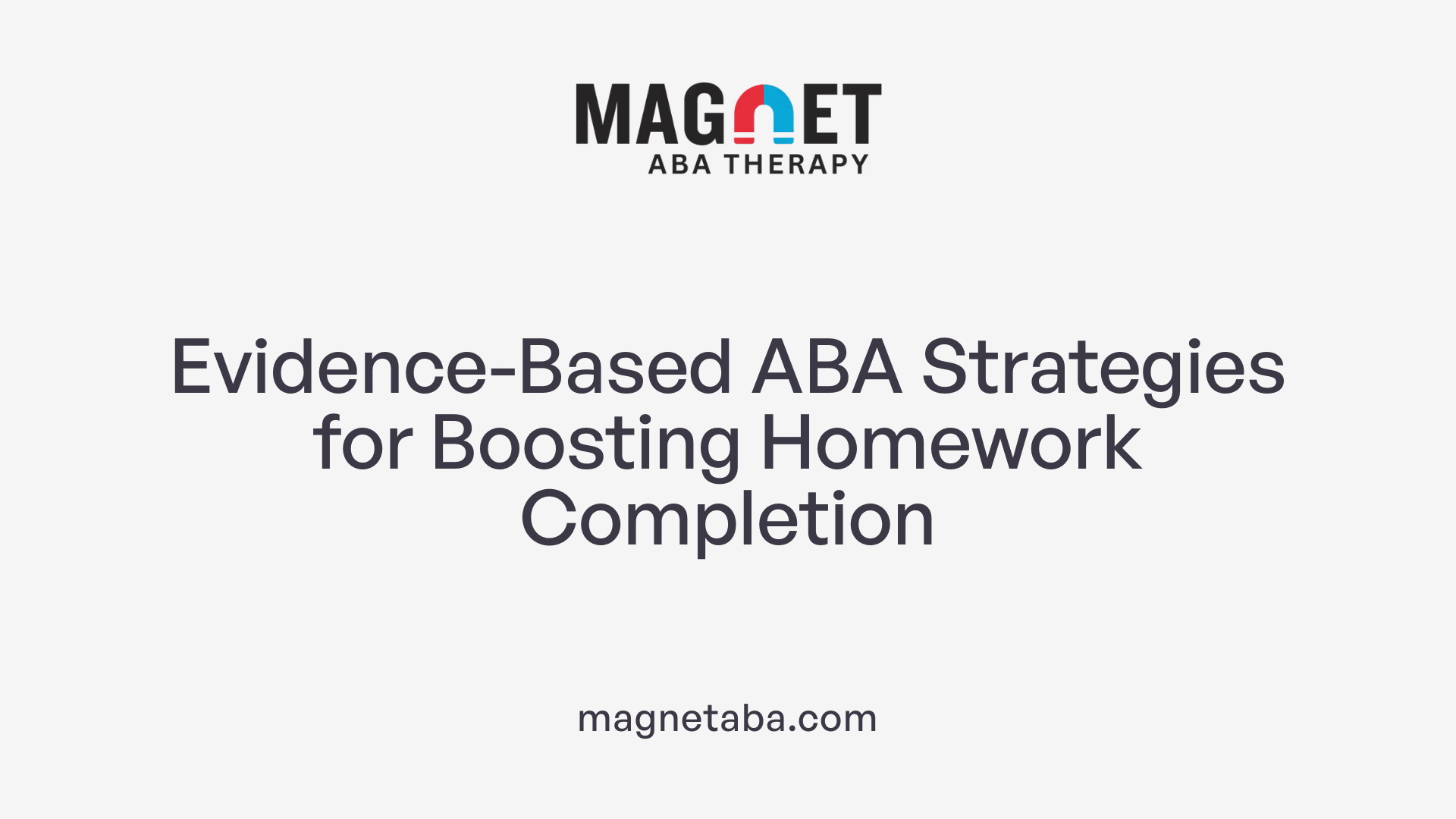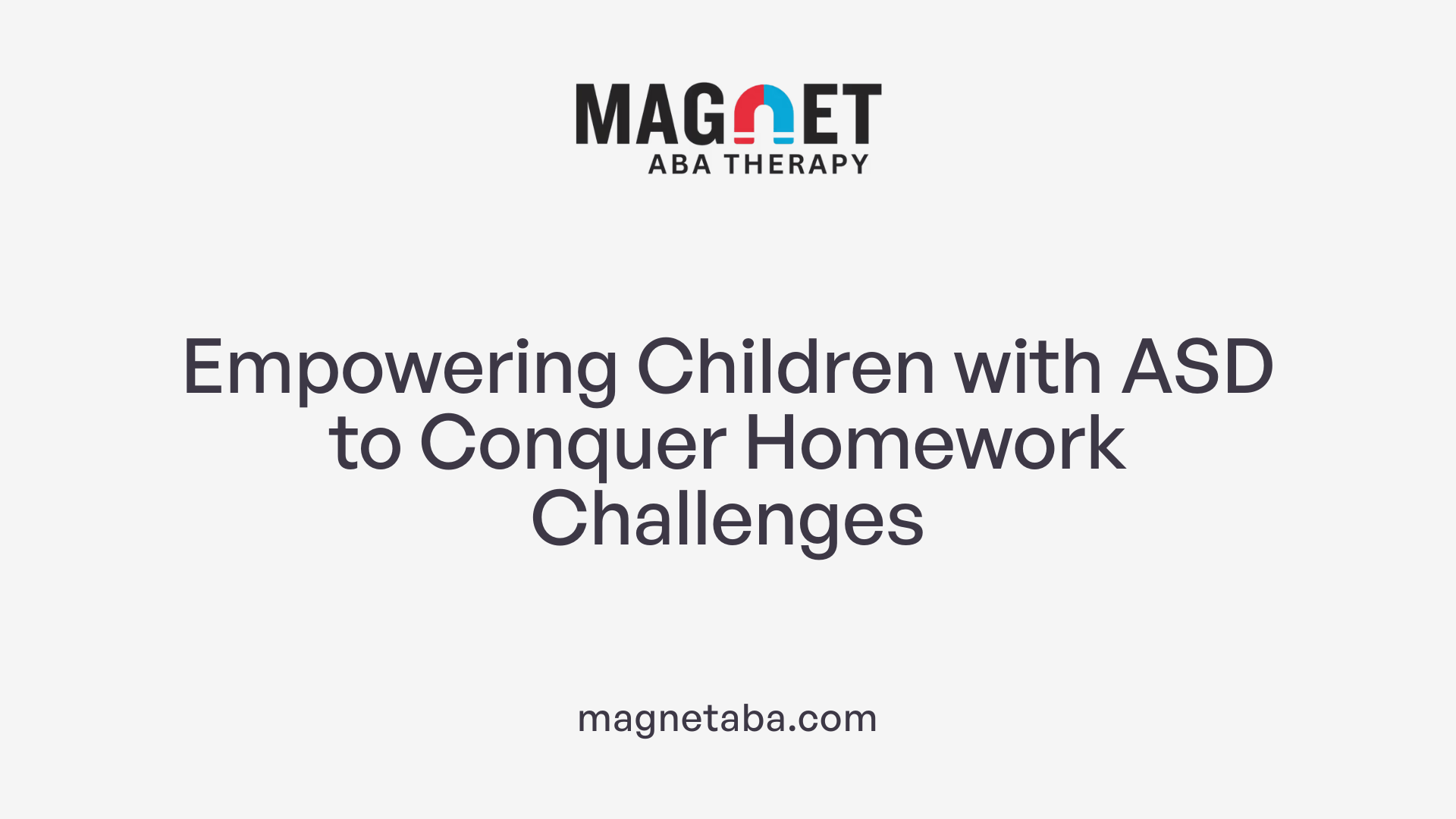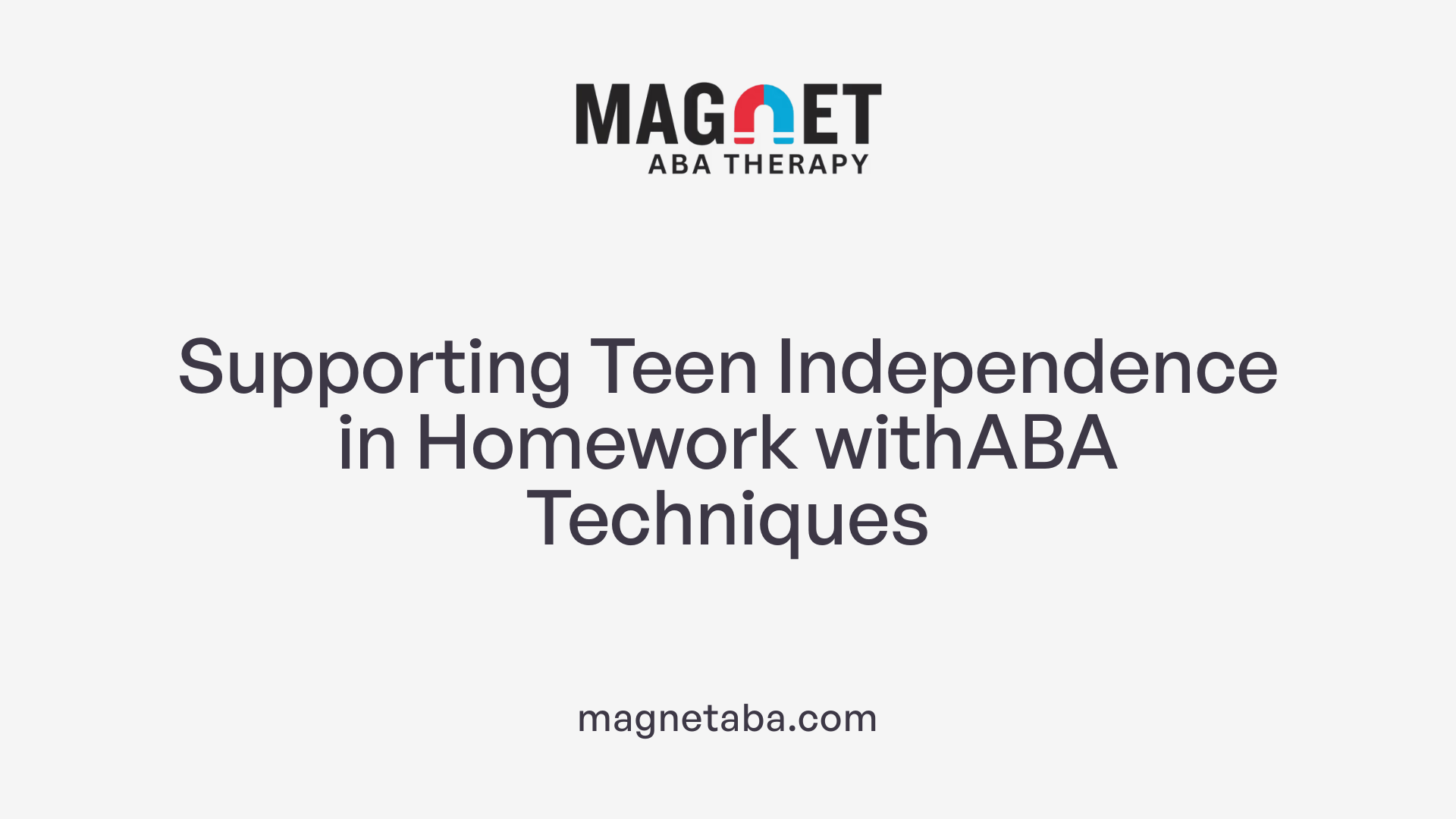Empowering Students Through Applied Behavior Analysis
Homework can be a challenging aspect of education for many children, particularly those with diverse learning needs or autism spectrum disorder (ASD). Applied Behavior Analysis (ABA), a research-backed approach, provides a structured framework to enhance homework completion, motivation, and independence. This article explores how ABA supports academic success across different age groups and learning profiles, emphasizing practical strategies for parents, educators, and caregivers.
Understanding ABA and Its Role in Homework Support

Fundamentals of ABA
Applied Behavior Analysis (ABA) is a scientifically validated approach that uses principles of learning and behavior to support skill development and behavior change. In the context of homework, ABA employs techniques like reinforcement, prompting, and task analysis to make tasks more manageable and motivating for children with diverse learning needs.
Reinforcement involves providing positive feedback or rewards when a child completes a homework task, which encourages repeated behaviors. Prompting offers cues or assistance initially and gradually fades as independence increases. Task analysis breaks down complex assignments into smaller, achievable steps, reducing overwhelm and building confidence.
ABA is delivered by trained professionals, including Board Certified Behavior Analysts (BCBAs), ensuring strategies are tailored and effective. The ultimate goal is to foster independence, improve motivation, and achieve better academic outcomes.
How ABA principles relate to homework
ABA principles support homework in various ways. They help in creating structured routines, simplifying instructions, and increasing engagement through effective reinforcement.
Implementing visual supports like schedules and checklists makes learning expectations clear and tangible for children. Emphasizing positive reinforcement, whether through praise, rewards, or tokens, motivates children to complete tasks and feel successful.
Furthermore, ABA encourages collaboration with teachers and therapists to modify strategies according to individual needs, ensuring approaches are adaptable and supportive. This comprehensive framework makes homework sessions less stressful and more productive.
The strategies do not just improve task completion; they also promote skills like self-management and self-advocacy, enabling children to become more independent learners and prepared for future academic challenges.
| Strategy | Description | Purpose |
|---|---|---|
| Reinforcement | Offering rewards or praise | Boost motivation and increase desirable behaviors |
| Prompting | Providing cues initially | Guide children through tasks, reducing frustration |
| Task Analysis | Breaking down assignments | Make tasks manageable and clear |
| Visual Supports | Schedules and checklists | Help children understand and organize homework |
| Collaboration | Working with educators | Tailor strategies to individual needs |
ABA strategies are evidence-based tools that, when applied thoughtfully, can transform homework as a learning opportunity, fostering skill development and independence in children with ASD and other learning differences.
Strategies That Promote Homework Completion Based on Evidence

What evidence-based ABA strategies are effective in promoting homework completion?
Successful homework strategies rooted in Applied Behavior Analysis (ABA) include several practical approaches that focus on motivation, understanding, and independence.
One fundamental technique is positive reinforcement. When children earn praise, rewards, or tokens for completing homework, it encourages them to repeat the behavior. This reinforcement builds their motivation and confidence, making homework a more positive experience.
Another important strategy is task analysis and chaining. This involves breaking down complex homework tasks into smaller, manageable steps. For instance, writing a paragraph can be divided into planning, drafting, editing, and finalizing. These steps are taught sequentially, enabling children to master each part before moving to the next. This approach reduces overwhelm and promotes independence.
Prompting and fading are also widely used. Initially, prompts—such as verbal cues or physical guidance—help children perform homework tasks correctly. Over time, prompts are gradually withdrawn, encouraging the child to complete tasks independently. This fading process ensures skills are maintained without reliance on prompts.
The use of visual supports enhances understanding and organization. Visual schedules, checklists, or diagrams clearly outline what needs to be done, helping children anticipate and prepare for each step. Visuals can also serve as reminders, reducing confusion and increasing task completion.
In addition to these techniques, establishing consistent reinforcement schedules and possibly using behavior contracts can further boost motivation. Regular check-ins with reinforcement and clear expectations promote accountability and foster a positive attitude towards completing homework.
These strategies are delivered by qualified professionals, such as Board Certified Behavior Analysts (BCBAs), ensuring their scientific grounding and applicability. When applied consistently at home and in collaboration with educators, these evidence-based ABA methods effectively support children with diverse learning needs in their homework routines.
Supporting Children with ASD in Completing Homework

How can ABA therapy help children with ASD in completing homework?
ABA therapy offers valuable support for children with Autism Spectrum Disorder (ASD) to succeed with their homework tasks. It focuses on developing foundational skills such as communication, attention, and self-regulation by applying techniques like task analysis. This process involves breaking down complex assignments into smaller, manageable steps, which reduces feelings of overwhelm and helps children understand what is expected.
In addition, ABA emphasizes positive reinforcement—such as praise, rewards, or preferred activities—whenever a child makes progress or completes a step. This encourages persistence and builds confidence in handling academic tasks. Visual supports, like checklists, visual schedules, and diagrams, are used to clarify instructions and provide visual cues that aid understanding and recall.
Furthermore, ABA employs prompting and fading strategies to guide children through steps initially, gradually reducing assistance as they gain independence. These methods help children develop the skills necessary to complete homework with less support over time.
Addressing behaviors that may hinder homework completion, ABA also aims to minimize distractions and increase motivation. Through tailored interventions, children learn to stay focused, manage their energy levels with scheduled breaks, and develop strategies to seek help when needed.
Overall, ABA’s individualized, evidence-based approach equips children with ASD with the skills to become more autonomous and confident in completing homework, promoting academic success and independence.
Supporting Teens with Homework Through ABA Approaches

What ABA approaches can be used to support teenagers in completing their homework?
Applying ABA strategies to support teens in finishing their homework involves several effective techniques. One foundational method is task analysis, which breaks down complex assignments into small, manageable steps. This helps reduce feelings of overwhelm and clarifies what needs to be done.
Prompting and fading are essential for guiding teens toward independent work. Initially, prompts such as verbal cues or physical guidance are provided, then gradually decreased as the teen gains confidence and skills.
Positive reinforcement plays a significant role. Recognizing efforts with praise, tokens, or privileges boosts motivation and encourages repeated desirable behaviors, like asking for help or completing tasks.
Visual supports like checklists, schedules, and diagrams help teens understand expectations, organize their work, and stay focused. Creating a distraction-free environment—by controlling noise and clutter—also promotes better concentration during homework sessions.
Teaching self-monitoring encourages teens to evaluate their progress and recognize when they need assistance. Self-advocacy skills, such as asking questions or requesting breaks, foster independence and confidence.
Another critical element is collaboration, where parents, teachers, and therapists work together. This teamwork ensures consistent strategies, supports skill generalization across settings, and helps tailor interventions to meet individual needs.
Implementing these ABA techniques helps teens develop greater independence, reduce anxiety around homework, and improve their overall academic engagement.
Practical Resources and Educational Materials on ABA and Homework
 For parents and caregivers seeking reliable information and tools to support children using ABA strategies for homework, several resources are available. Reputable online sources like Milestones Autism Resources provide comprehensive toolkits and practical tips focused on promoting homework success through visual supports, positive reinforcement, and routine establishment.
For parents and caregivers seeking reliable information and tools to support children using ABA strategies for homework, several resources are available. Reputable online sources like Milestones Autism Resources provide comprehensive toolkits and practical tips focused on promoting homework success through visual supports, positive reinforcement, and routine establishment.
Scholarly articles and guidelines on ABA applications in educational settings offer detailed, evidence-based methods to enhance behavior management and skill development during homework sessions.
Various tools and apps are specifically designed to support homework routines. For example, ABA Flashcards & Games and First-Then Visual Schedule are popular apps that help children with autism organize tasks, understand expectations, and stay engaged.
Community support plays a vital role. Connecting with local support groups or professionals specializing in ABA can provide personalized guidance, practical advice, and encouragement, making it easier to implement effective strategies at home.
Below is a table summarizing some available resources:
| Resource Type | Examples | Purpose | Additional Notes |
|---|---|---|---|
| Websites | Milestones Autism Resources | Educational info, toolkits, tips | Focus on homework strategies, visual supports |
| Apps | ABA Flashcards & Games, First-Then Visual Schedule | Visual organization, task management | Supports independence and motivation |
| Support Groups | Local therapy groups, online forums | Practical advice, emotional support | Facilitates experience sharing |
Accessing these resources can significantly enhance your ability to help children with ASD develop independence and success in their homework tasks.
Integrating ABA for Sustained Homework Success
Implementing ABA strategies in homework routines can significantly enhance a child's ability to complete assignments independently and confidently. By combining reinforcement, task analysis, visual supports, and collaboration, families and educators can create a supportive environment that reduces overwhelm and builds skills. As ABA continues to evolve with new tools and techniques, its application in educational settings promises ongoing improvements in motivation, engagement, and academic achievement for children and adolescents with diverse learning needs.
References
- Homework Strategies: Helping your Child with Learning at Home
- 7 Strategies for Homework Success with Children with ASD
- Powerful ABA Therapy Strategies That Help Teens Thrive
- How ABA Therapy Can Help In School
- Homework Tool Kit | Milestones Autism Resources | Cleveland, OH
- 5 ABA Therapy Tools & Resources for Parents
- How to Use ABA in the Classroom
- Applied Behavior Analysis in Children and Youth with Autism ...
- Applied Behavior Analysis (ABA) | Autism Speaks
- Task Analysis in ABA Therapy: Strategies and Examples












